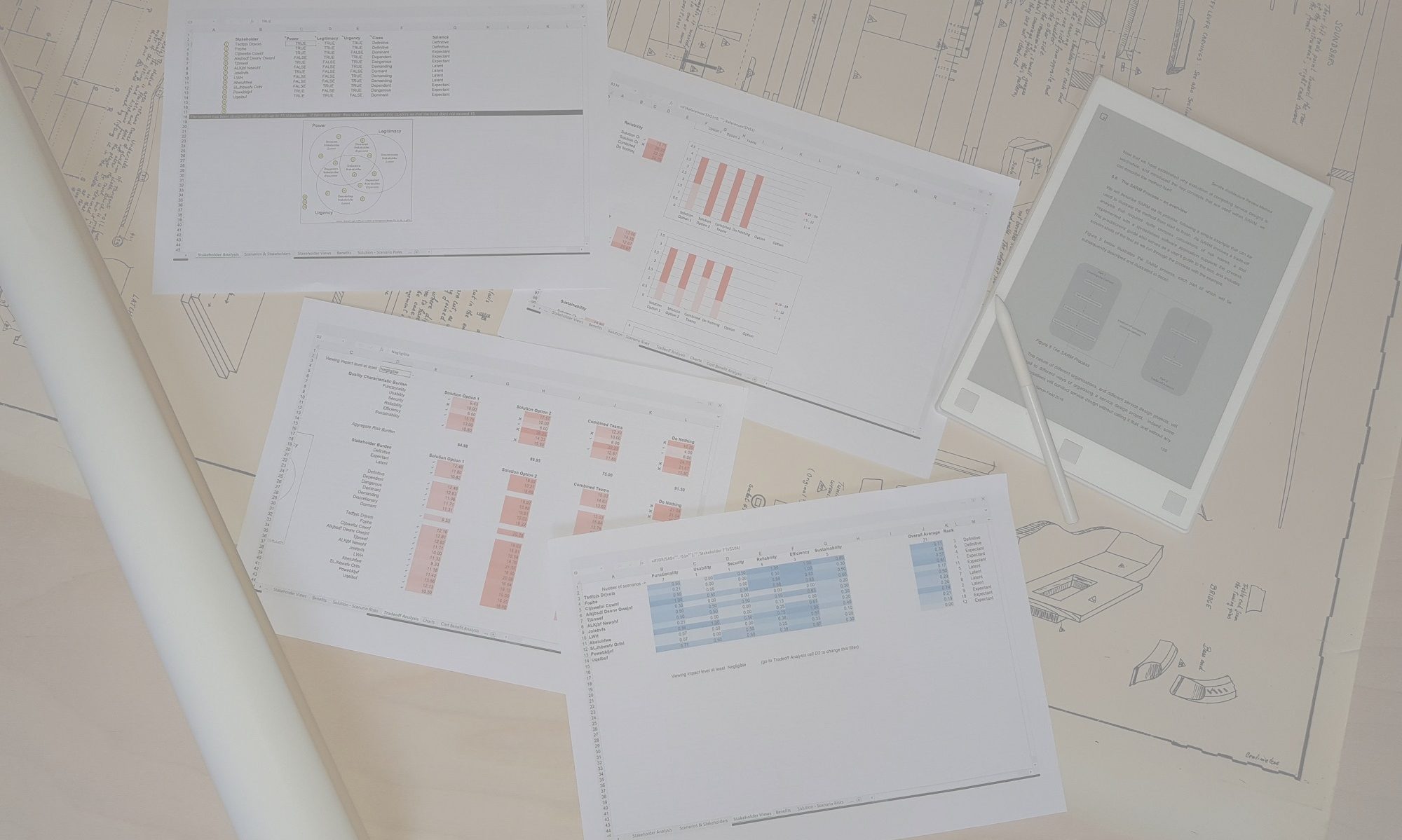Q. This looks complicated, do I have to use it?
A. No. Many organisations do not include a cost benefit analysis as part of an architecture analysis, and its inclusion in your use of SARM is optional. You can skip entirely the ‘Benefits’ tab as you work across the spreadsheet, and you will still be able to conduct a full trade-off analysis. The corresponding Cost Benefit Analysis tab will not, in this situation, contain any useful information.
Q. How are the benefits spread across the scenarios?
A. To analyse the differences between the solution options, the total benefits need to be allocated across the different architecturally significant requirements. As these will then have varying likelihoods of being successfully achieved with different solution options, we can estimate the different levels of actual benefits that will be derived from each solution option. But this can only be done if we have a benefit figure for each requirement. SARM provides three ways of doing this. The most accurate, but perhaps the hardest, way is for you to allocate different benefit amounts to each requirement, making sure that the total adds up to the total maximum benefit (Cell C6 in the Benefits tab). As there may be up to 100 scenarios, this is quite a lot of work! To choose this approach, just set F5 to Assigned and populate column F. A simpler alternative is to allow the spreadsheet to estimate the benefit amount for each requirement by applying a weighted allocation derived from the requirement’s expected Impact value. This approach is automated, and makes the assumption that a requirement with greater Impact will derive a greater proportion of the total benefit, using the numeric value of impact as a weight. To choose this approach, just set F5 to Derived, and the weighted allocation will appear in column I. The third approach is a hybrid of the two, allowing you to assign some specific benefit amounts to some requirements and have the system allocate the balance (unassigned benefit) to the requirements that have zero assigned benefit (in column F). You can even change the weight associated with that automated allocation by changing the numbers in column G.
Q. Where did the cost benefit analysis idea come from?
A. The incorporation of cost benefit analysis into SARM was inspired by the SEI’s CBAM (Cost Benefit Analysis Method) and its relationship to ATAM (Architecture Trade-off Analysis Method). See this paper for more details. Furthermore, I realised that SARM’s use of a risk model, with its two constituent components of Impact and Likelihood, could lead to an elegant approach to apportioning the total benefits across a set of requirements (using the Impact values as weights) and to adjusting the benefits to reflect the likely outcome resulting from selecting a less than perfect solution option (using the Likelihood). A minimal approach to cost benefit analysis therefore only needs the user to estimate overall benefits and high-level costs for each solution.

